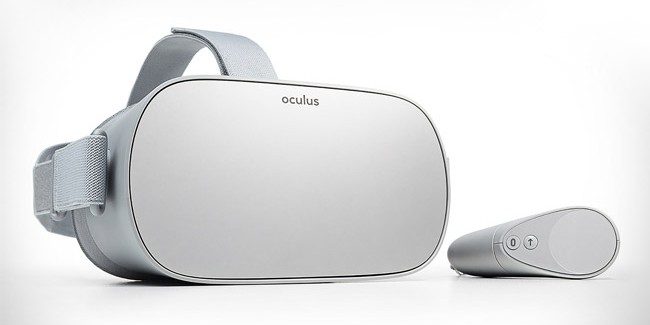Oculus Offers Dev Recommendations for Developing Oculus Go Apps
As Oculus prepares for the upcoming launch of its first standalone virtual reality headset, Oculus Go, the company aims to make sure that developers have everything they need to know to develop Oculus Go apps for the new headset.
According to a recent post on the Oculus developer blog, the team reiterates that Oculus Go is “binary-compatible” with Samsung’s Oculus-powered Gear VR platform, which means that applications and experiences developed for the Gear VR will also work on Go essentially right out of the box at launch without the need of any modification. However, there are some key differences between building for the two mobile VR platforms that developers should be aware of and consider:
- Google Play Services: Unlike the Samsung Galaxy devices that run Gear VR, Oculus Go does not ship with Google Play Services installed. You cannot rely on Google Play Services (e.g. Google Firebase, Google Cloud Messaging, etc), or third-party libraries that depend on Google Play Services (e.g. OneSignal) when running on Oculus Go.
- 2D Surfaces: Oculus Go does not have a 2D phone display, and therefore some app behaviors (such as push notifications, or authentication via a separate Android application) do not make sense on Oculus Go.
- Camera: Oculus Go does not have a camera, and cannot run applications that rely upon access to a camera.
- HMD Touchpad: Oculus Go does not have a touchpad on the HMD. Your app should not refer to an HMD touchpad when running on Oculus Go.
- Different Controller: The Oculus Go Controller and Gear VR Controller share the same inputs: both are 3DOF controllers with clickable trackpads and an index finger trigger. Though these two devices provide the same inputs, the physical design of each is distinct. If your app displays a visible controller, you should change the model displayed depending on whether you are running on Gear VR or Oculus Go. Alternatively, a stylized controller model that is distinct from both the Oculus Go Controller and the Gear VR Controller is acceptable.
- Recent SDK Required: Some very old Gear VR apps are still running on pre-1.0 releases of the Mobile SDK. These apps are not supported on Oculus Go.
In addition, Oculus shared technical details on how some of the unique features and improvements built into Oculus Go such as Fixed Foveated Rendering, Dynamic Throttling, and 72 Hz Mode can be utilized in order for developers to get the maximum potential out of their application. Developers are also recommended to use specific versions of Unity and Unreal development tools to access many of these new Oculus Go features. The recommended development tools include the following:
- Unity 5.6.5p2 or 2017.4.2 with Oculus Utils 1.24.1 or later (required for many new features described).
- Unreal 4.18, pulled from Oculus’ GitHub mirror.
- For native code applications, Mobile SDK 1.21 or later.
A number of reports suggest that the Oculus Go standalone mobile VR headset will officially launch at Facebook’s F8 developer conference on May 1st. With F8 just around the corner, we will know soon enough.

